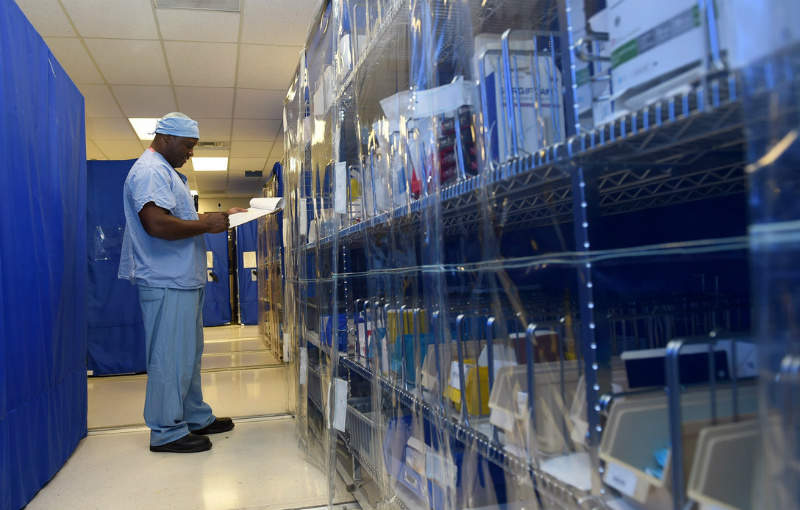
Antimicrobial resistance is one of the defining healthcare challenges of our times. As more bacteria become resistant to the drugs designed to treat them, we face the possibility of a return to a pre-antibiotic age of infectious disease.
Already, some 700,000 deaths each year are being attributed to antimicrobial resistance, a figure that could surge to 10 million by 2050 if the situation isn’t rectified. We are seeing the likes of drug-resistant hospital infections (such as MRSA and C. difficile), multi-drug-resistant pneumonia, and a barely treatable strain of gonorrhoea.
This is clearly a complex problem, with no straightforward solution. However, one key piece of the puzzle will be minimising inappropriate antibiotic use. At present, antibiotics are prescribed far more than they ought to be. The Center for Disease Control and Prevention (CDC) estimates that up to half of antibiotic use in humans, and much of antibiotic use in animals, is unnecessary and inappropriate. Improving ‘antibiotic stewardship’ (i.e., being responsible about how they’re taken) would make everyone safer.
Unfortunately, the issue is compounded by a lack of rapid diagnostic tests. Since traditional culture-based tests can take days to return results, antibiotics are often prescribed before the patient has a definitive diagnosis. Oftentimes, this means they end up taking antibiotics for non-bacterial infections.
As Dr Maria Daniela Angione, a researcher at Trinity College Dublin, explains, rapid detection is important for several reasons – not just for reducing antimicrobial resistance, but also for controlling the spread of disease.
“The current tests to identify bacterial infection require cell cultures, or they are based on immunoassay tests or PCR, which are extremely time consuming and require access to specialist facilities,” she says. “In the primary care setting, the gold standard for urinary tract infections for example is still cell culture, which takes three days for the bacteria identification. It’s a long time if you require a rapid answer.”
How well do you really know your competitors?
Access the most comprehensive Company Profiles on the market, powered by GlobalData. Save hours of research. Gain competitive edge.

Thank you!
Your download email will arrive shortly
Not ready to buy yet? Download a free sample
We are confident about the unique quality of our Company Profiles. However, we want you to make the most beneficial decision for your business, so we offer a free sample that you can download by submitting the below form
By GlobalDataShe adds that, while there are currently a few techniques available for rapidly detecting infections, their usage is hampered by price.
“They are based on an antigen detection test, but they are quite expensive and require specialised equipment,” she says. “So there is a clear need for rapid detection of viruses and bacteria. Ideally this should be low cost and applicable at the point of care, or without the assistance of highly trained medical personnel.”
DIY diagnosis: using disposable tools for rapid, accurate detection of bacteria
Angione is currently working on a device that could dramatically improve the situation. Specifically, she has developed an electronic chip that will be integrated into a sensing platform and used as a disposable diagnostic tool.
“I’m trying to develop a rapid and accurate test to detect and identify bacteria,” she explains. “The active layer of the chip is a molecularly engineered biopolymeric material with specific functionalities in a multi-array setting. It will enable clinicians to determine the appropriate antibiotic therapy in multiple infections and diseases, potentially improving the clinical outcomes for patients and reducing the inappropriate use of antibiotics.”
With a background in electronic device development, advanced materials development and biomolecules, Angione is drawing on an interesting blend of expertise. The upshot is that her device is like nothing else on the market today.
Incredibly, she thinks the tool could one day be available for purchase, enabling a DIY approach to diagnosis.
“In ten years time what I’d love is this technology to be available not only in the hospitals, not only to be used by clinicians and GPs, but available for everybody in the pharmacy,” she says. “Anyone who needs it could go and buy a disposable chip in the same way as we currently buy a pregnancy test, and would be able to use it at home. Then if needed, they could get an antibiotic prescription or an antiviral therapy prescribed by the GP.”
The journey to reach the market
While this goal may sound like a pipe dream, it could become reality in the not too distant future. Angione’s work has already reached a good stage of maturity and is beginning to generate commercial interest.
“We are running some preclinical trials, working in collaboration with clinicians and talking to many companies here in Ireland,” she says. “The technology is performing quite well so far. While we were running the market feasibility study we got in touch with a few world-leading pharmaceutical companies and they expressed a huge interest.”
Of course, she doesn’t anticipate that bringing the device to market will be an easy ride. Since it is so unlike the others out there, and the underlying technology is so disruptive, it may be harder to convince pharmaceutical companies of its competitiveness.
On top of that, there may be a number of societal barriers to dismantle before the technology is widely accepted.
“The first barrier that I see is related to the patients – they may have some expectations when they go to the GP, and clinicians might be reluctant to update their traditional approach that has been in use for so many years,” she says. “Also, the pharmaceutical companies need to produce new antibiotics but they have little funding to invest in this area. So it’s not just the development of the technology that is a challenge.”
All this said, she holds high hopes for the future, pointing out that the device’s advantages speak for themselves. As it uses integrated circuits and low-cost electronic components, it is not only sensitive but cheap and easy to make. This means it could be suitable for use in remote, low-income settings – not to mention available in the pharmacy.
“It could facilitate diagnosis and enable a targeted therapeutic plan at an early stage of bacterial or viral infection, reducing the healthcare cost,” she explains.
In the short term, she’s hoping to work together with industry and clinicians to source more funding.
“Of course it’s a long process, but there are a few opportunities so I’m hoping to get more funding and to develop tools to validate the technology, bringing it to the market as soon as possible,” she says. “We hope that this interest will generate the support required to advance the technology to a point of commercialisation in the next five years.”




